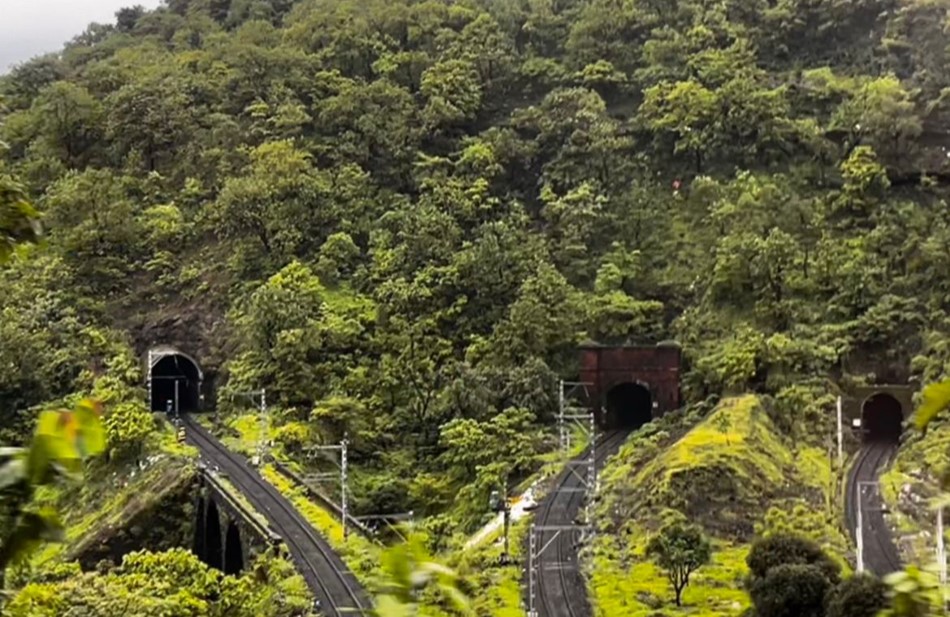
In the world of leadership, navigating through challenges and making pivotal decisions is a daily routine. The choices we make as leaders not only impact our teams but also determine the direction and success of our organizations. However, it’s crucial to recognize that there is never just one path to success. In the dense forest of leadership, where obstacles loom large like hills, we often find ourselves standing before a set of railway track tunnels. Each tunnel represents a different approach, a unique solution to the challenge at hand. This article explores the concept that there is always another way, and by embracing alternative approaches, leaders can unlock new possibilities for growth and innovation.
The Power of Perspective. Before we delve into the idea of alternative approaches, let’s consider the power of perspective. As leaders, we are often presented with complex problems that appear to have only one apparent solution. This tunnel vision can limit our ability to see alternative routes, potentially missing out on more effective or innovative solutions.
Imagine a scenario where a manufacturing company is facing a decline in product quality allegedly due to outdated machinery. The conventional approach might be to invest in new machinery, a costly endeavor that could strain the company’s finances. However, an alternative perspective might suggest retraining the existing workforce to optimize the current machinery. This approach not only saves money but also enhances the team’s skill set.
By broadening our perspective, we can discover new opportunities that may not have been initially apparent. It’s like stepping outside the tunnel and seeing the entire forest, not just the path in front of us.
The Three Tunnels of Leadership
In our metaphorical forest of leadership, we often encounter three distinct tunnels, each representing a different approach to problem-solving and decision-making. Let’s explore these tunnels and their real-world applications.
The Efficiency Tunnel
The Efficiency Tunnel is all about doing things faster, better, and with fewer resources. This approach is particularly appealing when organizations are looking to optimize their processes and cut costs. It involves streamlining operations, eliminating waste, and maximizing productivity.
Example: Consider a tech startup facing tight deadlines for product development. The leadership team might initially focus on hiring more developers to speed up the process. However, an alternative approach within the Efficiency Tunnel could involve implementing agile methodologies, fostering collaboration, and optimizing existing resources. This approach not only accelerates product delivery but also enhances the team’s problem-solving skills.
The Innovation Tunnel
The Innovation Tunnel encourages leaders to think outside the box, fostering creativity and pushing boundaries. This approach is essential for organizations looking to stay competitive in rapidly changing industries. It involves experimenting with new ideas, encouraging risk-taking, and fostering a culture of innovation.
Example: A traditional brick-and-mortar retail business faces stiff competition from online retailers. Instead of solely relying on traditional marketing strategies, the leadership team decides to venture into the digital space. They develop a mobile app that offers unique in-store experiences, bridging the gap between physical and online shopping. This innovative approach not only boosts sales but also attracts a younger demographic.
The People-Centric Tunnel
The People-Centric Tunnel prioritizes the well-being and development of employees. It recognizes that the success of an organization is intrinsically linked to the happiness and engagement of its workforce. This approach involves investing in employee training, fostering a positive company culture, and promoting work-life balance.
Example: A healthcare organization faces high turnover rates among its nursing staff, impacting patient care. Instead of simply hiring more nurses, the leadership team decides to take a people-centric approach. They implement flexible scheduling, provide opportunities for career advancement, and offer comprehensive training programs. As a result, nurse retention rates increase, and patient satisfaction scores improve significantly.
Embracing Alternative Approaches
Now that we’ve explored the three tunnels of leadership, it’s crucial to understand that these tunnels are not mutually exclusive. In fact, the most effective leaders often combine elements from each tunnel to address complex challenges. Here are some strategies for embracing alternative approaches in leadership:
* Encourage Diverse Perspectives: Foster a culture where team members are encouraged to share their unique viewpoints and ideas. Different perspectives can lead to innovative solutions.
* Embrace Failure as a Learning Opportunity: Understand that not every alternative approach will lead to immediate success. Failure is often a steppingstone to discovering better solutions.
* Invest in Continuous Learning: Stay updated on the latest leadership and industry trends. Attend workshops, conferences, and seek out mentors who can offer fresh insights.
* Collaborate Across Departments: Break down silos within your organization and encourage cross-functional collaboration. This can lead to the discovery of alternative approaches that span multiple areas.
* Stay Open-Minded: As a leader, it’s essential to remain open to new ideas and approaches. Don’t become entrenched in a single way of thinking.
In the dense forest of leadership, where challenges loom like hills, we are often presented with a choice of tunnels, each representing a different approach. The Efficiency Tunnel focuses on optimizing processes, the Innovation Tunnel fosters creativity, and the People-Centric Tunnel prioritizes employee well-being. While these tunnels offer unique solutions, effective leaders recognize that no one tunnel is the optimal solution and needs to be mixed and matched based on situation. Thus, flexibility is an important competence for a leader.
By embracing alternative approaches and considering diverse perspectives, leaders can unlock new possibilities for growth and innovation. Just as a train can navigate through any of the three tunnels in our metaphorical forest, so too can leaders adapt their strategies to overcome obstacles and chart a course toward success.
As you navigate the complex landscape of leadership, remember to step outside the tunnel, see the forest for the trees, and explore the vast array of possibilities that await. After all, in the world of leadership, there is always another way.